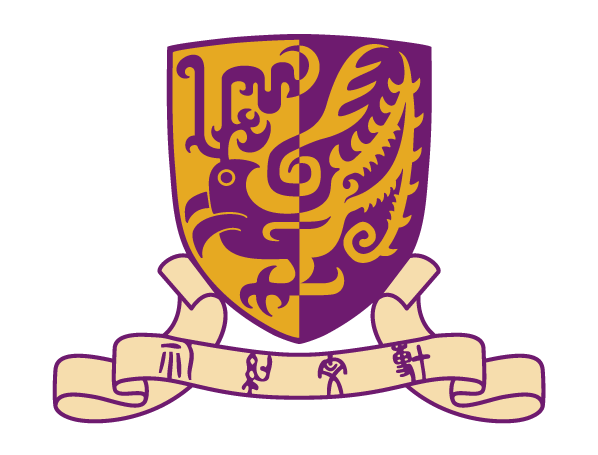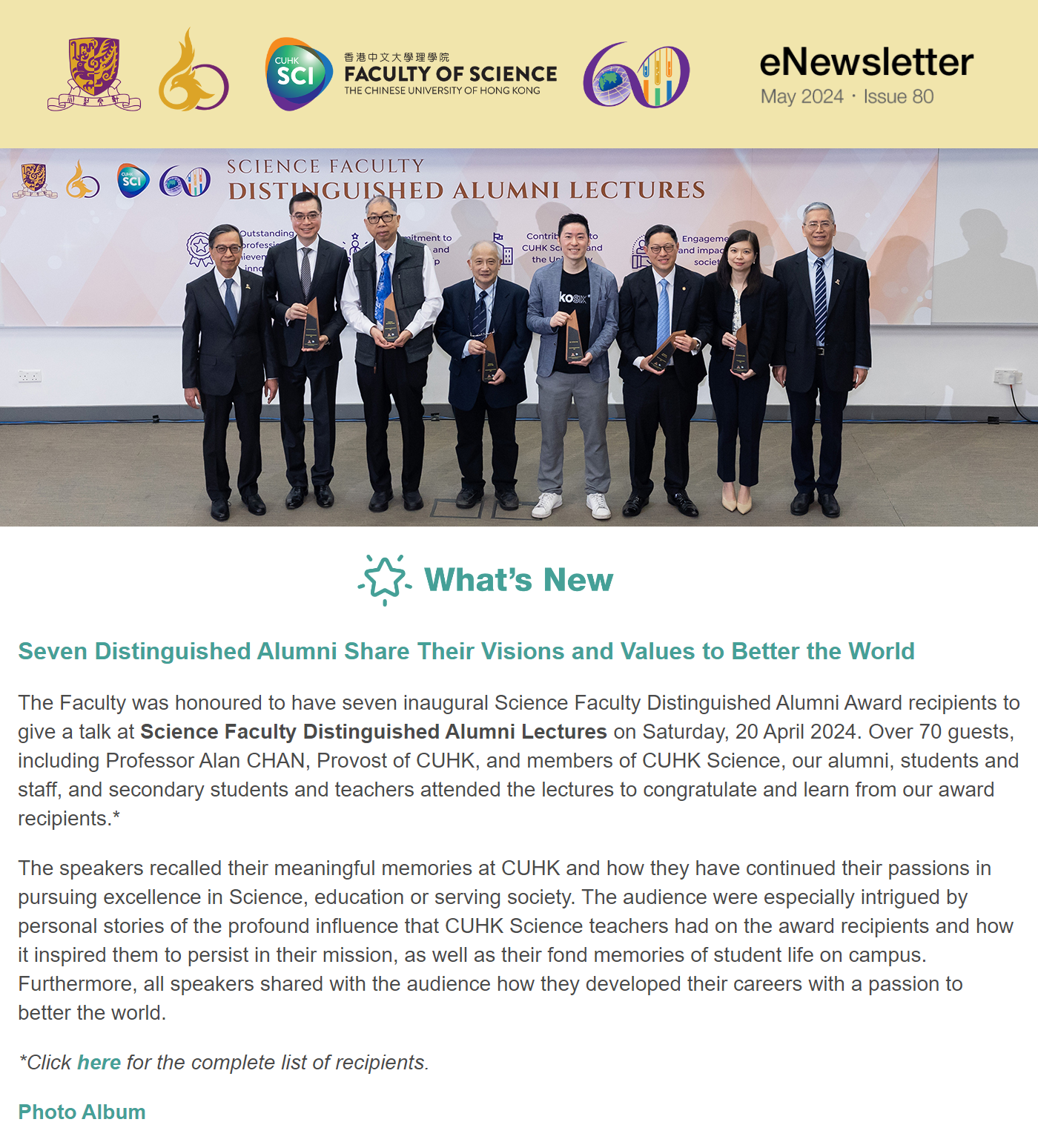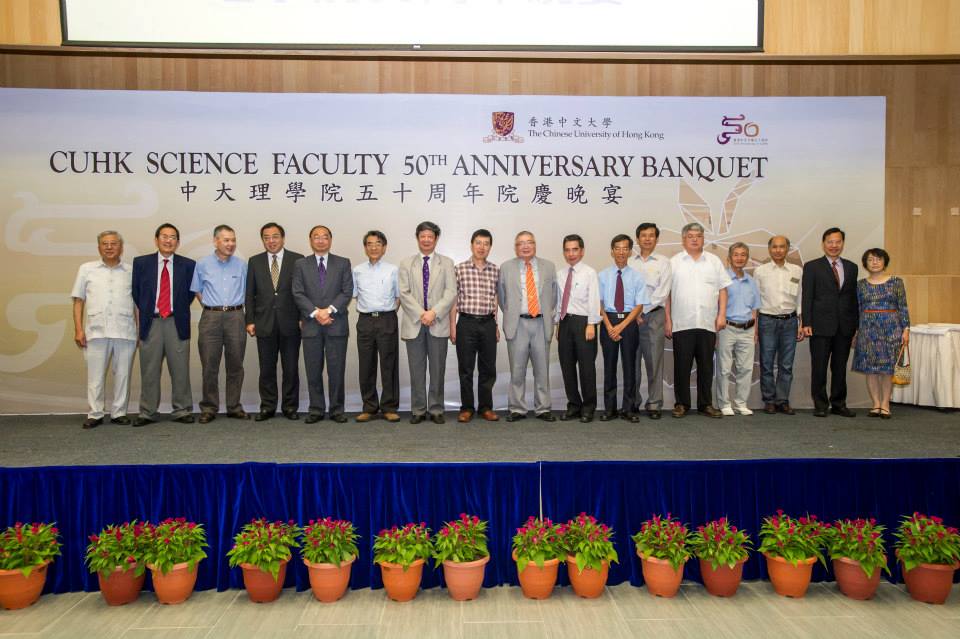Revisit an old problem in the development of artificial viruses – Complexation between DNA and PEI
Date: 18 February 2009 (Wednesday)
Time:12:30pm - 2:00pm
Venue: 126, C N Yang Reading Room, Science Centre North Block
Speaker: Prof. WU Chi, Professor of Chemistry, Department of Chemistry and Department of Physics, The Chinese University of Hong Kong
Abstract: After revisiting the captioned problem by using a combination of chemical synthesis and physical methods, we studied the dynamics of the complexation between branched polyethyleneimine (bPEI) and plasmid DNA (pDNA) and characterized the structure, size and surface charge of the resultant DNA/PEI complexes (polyplexes). As expected, in order to reach a high efficiency in gene transfection into cells it is necessary to use a higher N:P ratio and make the polyplexes positively charged. Our results reveal that it is those uncomplexed bPEI chains free in the solution mixture that plays a vitally important role in promoting the gene transfection, inspiring some new thinking of how to correlate in vitro and in vivo studies so that we can improve the in vivo transfection efficiency. Increasing the N:P ratio normally results in a higher cytotoxicity, which is a catch-22 problem. Recently, we found that a proper modification of bPEI can greatly reduce its cytotoxicity without any suffering in the transfection efficiency. In this lecture, we will show that our properly modified bPEI is even much more effective and less cytotoxic in the gene transfection than those commercially available lipoflexes. Our recent new development leads to a completely new direction in the development of non-viral vectors for molecular medicines, including gene transfection.














